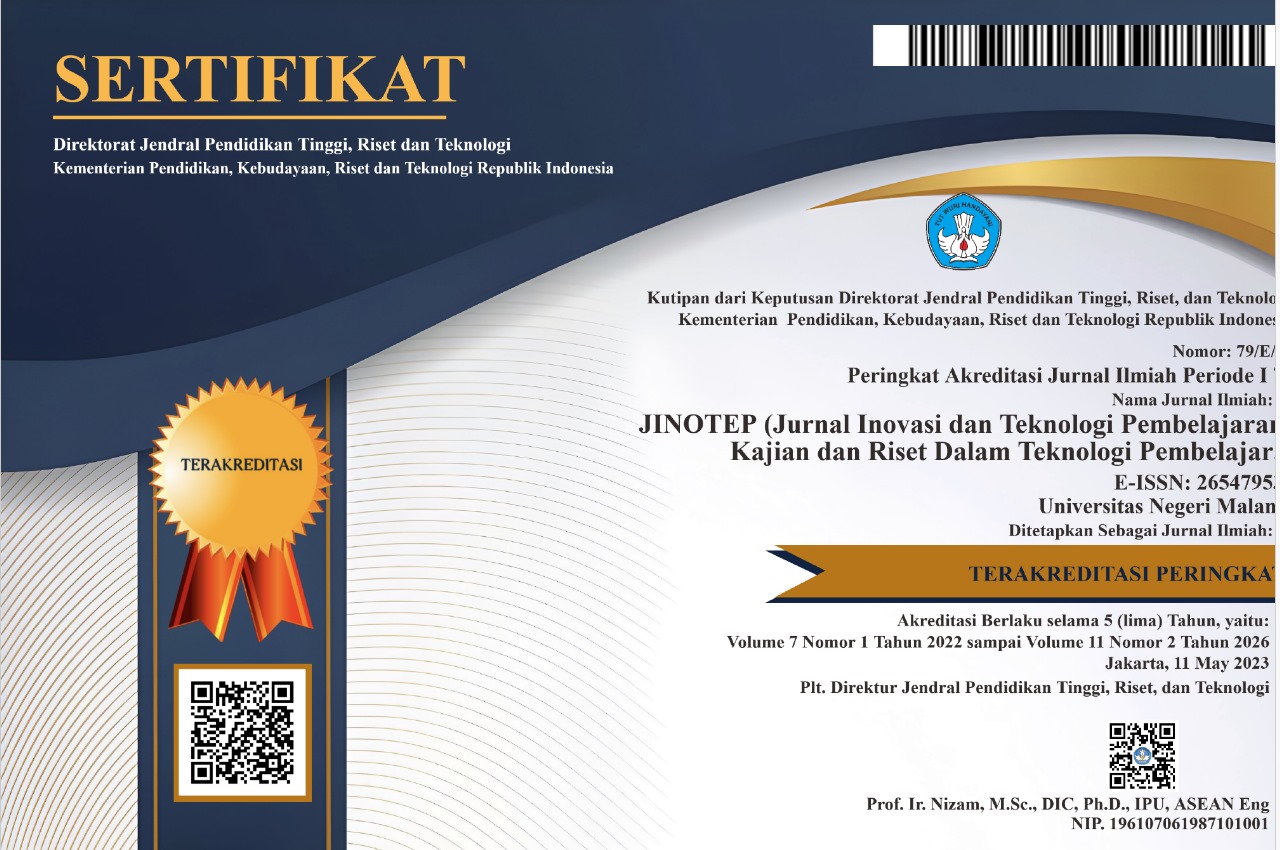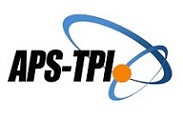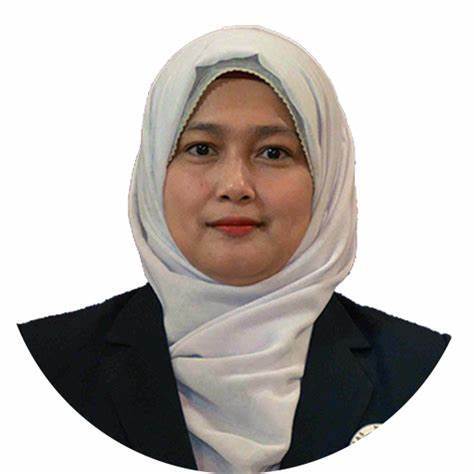Students' Perspectives on Virtual Learning During The COVID-19 Pandemic
Abstract
Abstrak: Pembelajaran virtual merupakan proses belajar mengajar yang menggunakan media virtual berbantuan platform berbasis web. Penelitian deskriptif kuantitatif ini bertujuan untuk memperoleh gambaran pelaksanaan pembelajaran virtual online calon guru pada masa pandemic COVID-19. Penelitian ini dilakukan pada calon guru di Fakultas Keguruan dan Ilmu Pendidikan Universitas Samawa. Responden penelitian sebanyak 51 orang yang dipilih menggunakan teknik purposive sampling. Instrumen dalam penelitian ini menggunakan kuesioner berisi pertanyaan dan pernyataan yang berjumlah 13 item dengan satu kolom komentar yang disediakan diakhir. Angket tersebut menggambarkan tentang proses pembelajaran virtual online dari kesiapan infrastruktur sampai dengan prospek pembelajaran ini kedepan. Hasil penelitian diperoleh bahwa dari empat aspek yang diukur, mahasiswa calon guru memiliki pandangan positif tentang proses pembelajaran secara daring termasuk berkategori tinggi kecuali pada aspek kepraktisan. Dapat disimpulkan bahwa pembelajaran secara daring mempermudah mahasiswa dalam proses belajar dan sangat membantu mereka dalam menghindari pencemaran COVID-19.
Abstract: Virtual learning is a teaching and learning process using virtual media assisted by a Web-based platform as a tool in the teaching and learning process. This quantitative descriptive study aims to obtain an overview of the implementation of virtual online learning for prospective teachers during the COVID-19 pandemic. This study was conducted on prospective teachers at the Faculty of Teacher Training and Education, Samawa University. The research respondents were 51 prospective teachers selected using the purposive sampling technique. The instrument in this study used a questionnaire containing questions and statements totaling 13 items with one comment column provided at the end. The questionnaires discuss the online virtual learning process, from infrastructure readiness to prospects for this learning. The study results showed that from the four aspects measured; teacher candidates had a view of the learning process being categorized as high except for the practical element. It can be concluded that online learning makes it easier for students in the learning process and helps them avoid contamination with COVID-19.
Keywords
Full Text:
PDFReferences
Alqahtani, S. M., Bhaskar, C. V., Vadakalur Elumalai, K., & Abumelha, M. (2018). WhatsApp: An online platform for university-level english language education. Arab World English Journal, 9(4), 108-121. https://doi.org/10.24093/awej/vol9no4.7
Ardianti, S., Sulisworo, D., Pramudya, Y., & Raharjo, W. (2020). The impact of the use of STEM education approach on the blended learning to improve student’s critical thinking skills. Universal Journal of Educational Research 8(3B), 24-32. https://doi.org/10.13189/ujer.2020.081503
Aulia, N. winanda, & Aina, M. (2016). Pengembangan multimedia interaktif menggunakan camtasia studio 8 pada pembelajaran biologi materi kultur jaringan untuk siswa SMA kelas XI MIA. BIODIK, 2(1), 20-26. https://doi.org/10.22437/bio.v2i1.3365
Azis, A. T. (2020). Kemandirian belajar mahasiswa program studi PPKN STKIP PGRI Nganjuk melalui pembelajaran daring di masa pandemi COVID-19. Jurnal Dharma Pendidikan STKIP PGRI Nganjuk, 15(2), 83-92.
Bhargava, S. (2020). Online classes for medical students during COVID-19 pandemic: through the eyes of the teaching faculty. Journal of Research in Medical and Dental Science, 8(4), 189-192.
Chen, T., Peng, L., Jing, B., Wu, C., Yang, J., & Cong, G. (2020). The impact of the COVID-19 pandemic on user experience with online education platforms in China. Sustainability (Switzerland), 12(18), 7329. https://doi.org/10.3390/SU12187329
Dahdal, S. (2020). Using the WhatsApp social media application for active learning. Journal of Educational Technology Systems, 49(2), 239-249. https://doi.org/10.1177/0047239520928307
Daulay, F., Purba, H. S. I., Tarigan, M. B., & Lubis, M. J. (2021). Efektivitas pemanfaatan platform media pembelajaran di masa pandemi Covid-19. In Prosiding Seminar Nasional PBSI-IV Tahun 2021 Tema: Pembelajaran Bahasa dan Sastra Indonesia Berbasis Digital Guna Mendukung Implementasi Merdeka Belajar (135-142). FBS Unimed Press. http://digilib.unimed.ac.id/id/eprint/43391.
Elyas, A. H. (2018). Penggunaan model pembelajaran e-learning dalam meningkatkan kualitas pembelajaran. Jurnal Warta, 56(04), 1-11. https://doi.org/10.46576/wdw.v0i56.4
Enriquez, M. A. S. (2014). Students’ perceptions on the effectiveness of the use of Edmodo as a supplementary tool for learning. DLSU Research Congress, 2(6), 1-6. https://doi.org/10.1017/CBO97-81107415324.004
Firman, F., & Rahayu, S. (2020). Pembelajaran online di tengah pandemi Covid-19. Indonesian Journal of Educational Science (IJES), 2(2), 81-89. https://doi.org/10.31605/ijes.v2i2.659
Garrison, D. R., & Cleveland-Innes, M. (2005). Facilitating cognitive presence in online learning: interaction is not enough. International Journal of Phytoremediation, 21(1), 133-148. https://doi.org/10.1207/-s15389286ajde1903_2
Gikas, J., & Grant, M. M. (2013). Mobile computing devices in higher education: Student perspectives on learning with cellphones, smartphones & social media. Internet and Higher Education, 19, 18-26. https://doi.org/10.1016/j.iheduc.2013.06.002
Hadisi, L., & Muna, W. (2015). Pengelolaan teknologi informasi dalam menciptakan model inovasi pembelajaran (e-learning). Jurnal Al-Ta’dib, 8(1), 117-140. http://dx.doi.org/10.31332/atdb.v8i1.396
Hasibuan, N. (2016). Pengembangan pendidikan islam dengan implikasi teknologi pendidikan. FITRAH:Jurnal Kajian Ilmu-Ilmu Keislaman, 1(2), 189-206. https://doi.org/10.24952/fitrah.v1i2.313
Hermansyah, H., Yahya, F., Fitriyanto, S., Musahrain, M., & Nurhairunnisah, N. (2020). Kemandirian belajar calon guru fisika melalui pembelajaran berbasis LMS: Schoology. Indonesian Journal of STEM Education, 2(1), 34-42.
Huang, R. H., Liu, D. J., Tlili, A., Yang, J. F., & Wang, H. H. (2020). Handbook on facilitating flexible learning during educational disruption: The Chinese experience in maintaining undisrupted learning in COVID-19 Outbreak. Smart Learning Institute of Beijing Normal University UNESCO.
Iftakhar, S. (2016). Google classroom: What works and how?. Journal of Education and Social Sciences, 3(1), 12-18.
Jugănaru, M. (2020). From traditional education to the online training process in Romanian higher education–an experiment generated by the new coronavirus pandemic. Ovidius University Annals, Series Economic Sciences, 20(1), 676-681. RePEc:ovi:oviste:v:xx:y:2020:i:1:p:676-681
Kauppi, S., Muukkonen, H., Suorsa, T., & Takala, M. (2020). I still miss human contact, but this is more flexible—Paradoxes in virtual learning interaction and multidisciplinary collaboration. British Journal of Educational Technology, 51(4), 1101-1116. https://doi.org/10.1111/bjet.12929
Khotimah, H., Zainiyati, H. S., Hamid, A., & Basit, A. (2020). E-learning application Madrasah online learning solution in the middle of pandemic Covid-19 in Ma Negeri Insan Cendekia, Kendari. Technium Social Sciences Journal, 10. https://doi.org/10.47577/tssj.v10i1.1365
Korucu, A. T., & Alkan, A. (2011). Differences between m-learning (mobile learning) and e-learning, basic terminology and usage of m-learning in education. Procedia - Social and Behavioral Sciences, 15, 1925-1930. https://doi.org/10.1016/j.sbspro.2011.04.029
Kumar, V., & Nanda, P. (2019). Social media in higher education: A framework for continuous engagement. International Journal of Information and Communication Technology Education, 15(1), 97-108. https://doi.org/10.4018/IJICTE.2019010108
Kuo, Y. C., Walker, A. E., Schroder, K. E., & Belland, B. R. (2014). Interaction, internet self-efficacy, and self-regulated learning as predictors of student satisfaction in online education courses. The Internet and Higher Education, 20, 35-50. https://doi.org/10.1016/j.iheduc.2013.10.001
Meidawati, S. A. N. B. R. (2019). Persepsi siswa dalam studi pengaruh daring learning terhadap minat belajar IPA. SCAFFOLDING: Jurnal Pendidikan Islam Dan Multikulturalisme, 1(2), 30-38. https://doi.org/-10.37680/scaffolding.v1i2.117
Moore, J. L., Dickson-Deane, C., & Galyen, K. (2011). E-Learning, online learning, and distance learning environments: Are they the same?. The Internet and Higher Education, 14(2), 129-135. https://doi.org/10.1016/j.iheduc.2010.10.001
Ningsih, S. (2020). Persepsi mahasiswa terhadap pembelajaran daring pada masa pandemi Covid19. JINOTEP (Jurnal Inovasi Dan Teknologi Pembelajaran): Kajian Dan Riset Dalam Teknologi Pembelajaran, 7(2), 124-132. http://dx.doi.org/10.17977/um031v7i22020p124.
Noviati, W. (2020). Kesulitan pembelajaran online mahasiswa pendidikan biologi di tengah pandemi Covid19. JURNAL PENDIDIKAN MIPA, 10(1), 7-11. https://doi.org/10.37630/jpm.v10i1.258
Nuere, S., & de Miguel, L. (2021). The digital/technological connection with COVID-19: an unprecedented challenge in university teaching. Technology, Knowledge and Learning, 26(4), 931-943. https://doi.org/10.1007/s10758-020-09454-6
Oknisih, N., & Suyoto, S. (2019). Penggunaan Aplen (Aplikasi Online) Sebagai Upaya Kemandirian Belajar Siswa. Seminar Nasional Pendidikan Dasar, 1(1).
Putra, O. L. (2021). Pengembangan media pembelajaran matematika menggunakan powerpoint dengan perpaduan mind mappada siswa kelas X MIPA SMA Negeri 7 Padang. JANGKA Jurnal Pendidikan Matematika Ekasakti, 1(1), 29-37. https://doi.org/10.31933/jangka.v1i1.176
Riduwan. (2011). Belajar Mudah Penelitian. Book, 1(1).
Riyanto, S., & Nugrahanti, F. (2018). Pemanfaatan aplikasi moodle dalam pembelajaran statistik pada mahasiswa informatika. Multitek Indonesia, 12(1), 40-46. https://doi.org/10.24269/mtkind.-v12i1.679
Sadikin, A., & Hakim, N. (2019). Pengembangan media e-learning interaktif dalam menyongsong revolusi industri 4.0 pada materi ekosistem untuk siswa SMA: Interactive media development of e-learning in welcoming 4.0 industrial revolution on ecosystem material for high school students. Biodik, 5(2), 131-138. https://doi.org/10.22437/bio.v5i2.7590
Sicat, A. S. (2015). Enhancing college students’ proficiency in business writing via schoology. International Journal of Education and Research, 3(1), 159-178.
So, S. (2016). Mobile instant messaging support for teaching and learning in higher education. Internet and Higher Education, 31, 32-42. https://doi.org/10.1016/j.iheduc.2016.06.001
Sun, P. C., Tsai, R. J., Finger, G., Chen, Y. Y., & Yeh, D. (2008). What drives a successful e-Learning? An empirical investigation of the critical factors influencing learner satisfaction. Computers and Education, 50(4), 1183-1202. https://doi.org/10.1016/j.compedu.2006.11.007
Sun, S. Y. H. (2014). Learner perspectives on fully online language learning. Distance Education, 35(1), 18-42. https://doi.org/10.1080/01587919.2014.891428
Swan, K. (2002). Building learning communities in online courses: The importance of interaction. Education, Communication & Information, 2(1), 23-49. https://doi.org/10.1080/1463631022000005016
Syafruddin, S., Musahrain, M., Noviati, W., Safitri, A., & Suhendra, R. (2020). Peningkatan kompetensi guru melalui pelatihan dan pendampingan di bidang TIK bagi guru SD Negeri Leseng Moyo Hulu. Jurnal Pendidikan dan Pengabdian Masyarakat, 3(4), 228-232.
Szpunar, K. K., Moulton, S. T., & Schacter, D. L. (2013). Preperformance state, routines, and automaticity: What does it take to realize expertise in self-paced events?. Journal of sport and exercise psychology, 24(4), 359-375. https://doi.org/10.3389/fpsyg.2013.00495
Tartavulea, C. V., Albu, C. N., Albu, N., Dieaconescu, R. I., & Petre, S. (2020). Online teaching practices and the effectiveness of the educational process in the wake of the Covid-19 pandemic. Amfiteatru Economic, 22(55), 920-936. https://doi.org/10.24818/EA/2020/55/920
Windhiyana, E. (2020). Dampak Covid-19 terhadap kegiatan pembelajaran online di sebuah perguruan tinggi kristen di Indonesia. Perspektif Ilmu Pendidikan, 34(1), 1-8. https://doi.org/10.21009/PIP.-341.1
Zhang, D., Zhao, J. L., Zhou, L., & Nunamaker, J. F. (2004). Can e-learning replace classroom learning?. Communications of the ACM, 47(5), 75-79. https://doi.org/10.1145/986213.986216
DOI: http://dx.doi.org/10.17977/um031v9i32022p211
Refbacks
- There are currently no refbacks.
Copyright (c) 2022 Musahrain Musahrain, Hermansyah Hermansyah, Suji Adrianti, Syafruddin Syafruddin

This work is licensed under a Creative Commons Attribution-ShareAlike 4.0 International License.
======================================================================
Jurnal Inovasi dan Teknologi Pembelajaran published by Universitas Negeri Malang in collaboration with the Asosiasi Program Studi Teknologi Pendidikan Indonesia (APS TPI) and Ikatan Profesi Teknologi Pendidikan Indonesia (IPTPI) with a MoU.
Publisher Address:
Educational Technology Laboratorium, Building D5, 1st Floor
Faculty of Education, Universitas Negeri Malang
Semarang St. No. 5, Malang City, East Java Province, Postal Code 65145
Email: jinotep.fip@um.ac.id
======================================================================

JINOTEP is licensed under a Creative Commons Attribution-ShareAlike 4.0 International License.
JINOTEP Statistics (Since July 13th, 2020)



.png)




.png)
1.png)
1.png)
4.png)
2.png)
1.png)
1.png)
.png)


_3.png)





1.png)
.png)